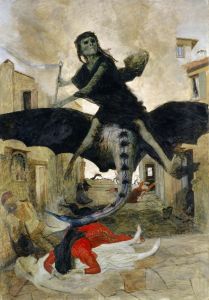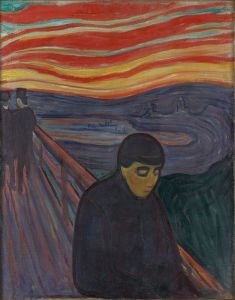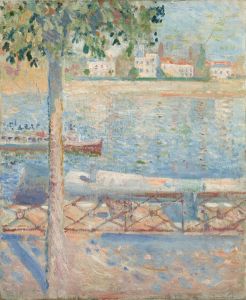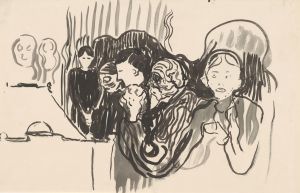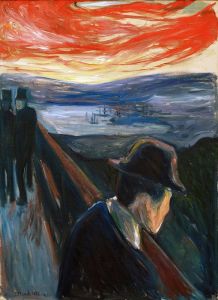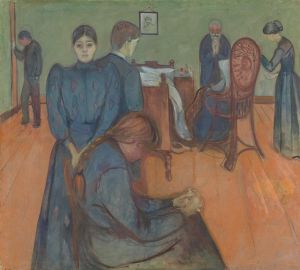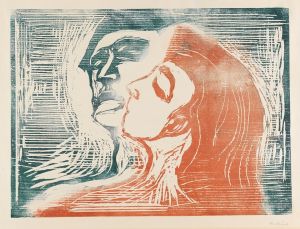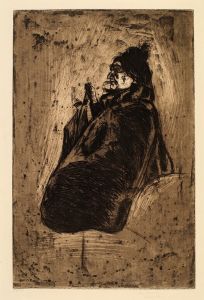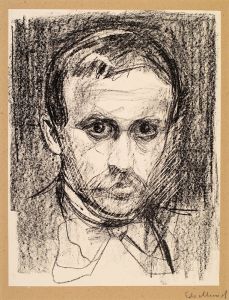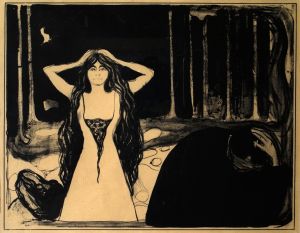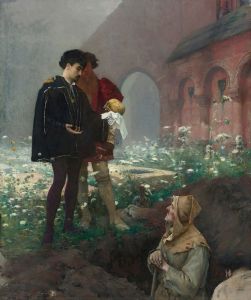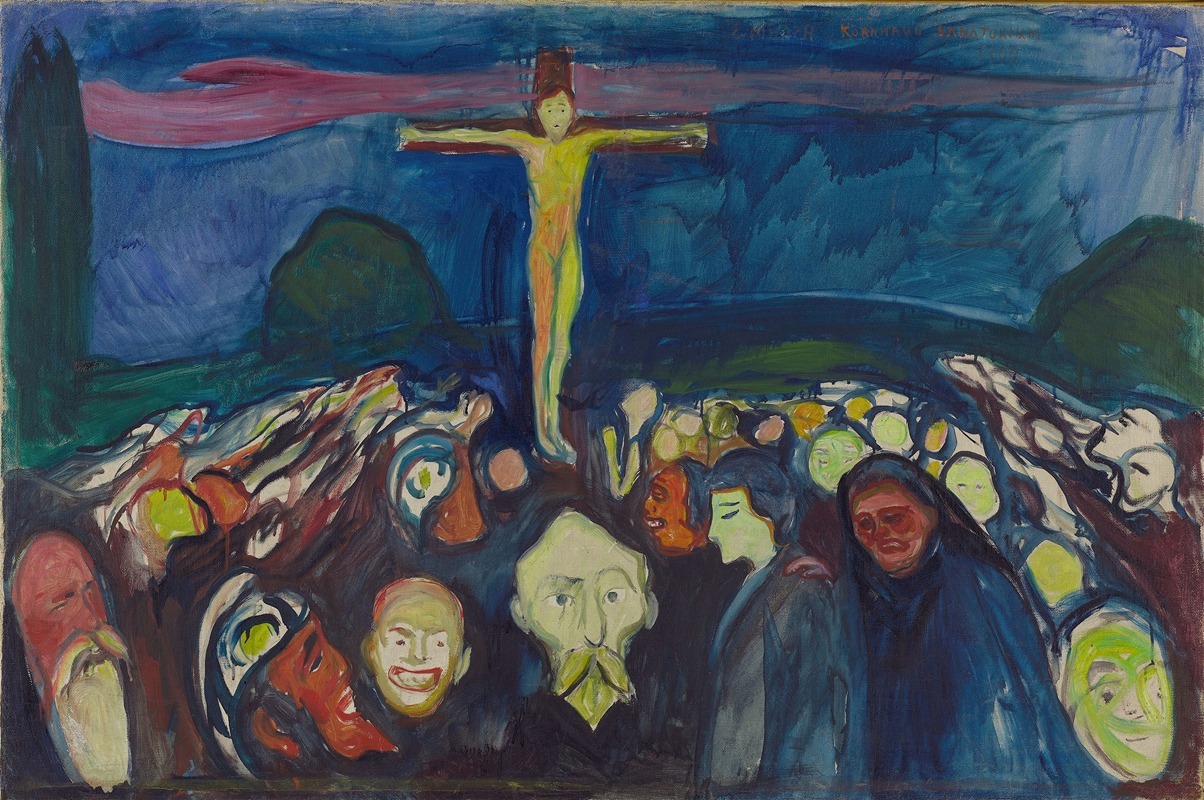
Golgotha
A hand-painted replica of Edvard Munch’s masterpiece Golgotha, meticulously crafted by professional artists to capture the true essence of the original. Each piece is created with museum-quality canvas and rare mineral pigments, carefully painted by experienced artists with delicate brushstrokes and rich, layered colors to perfectly recreate the texture of the original artwork. Unlike machine-printed reproductions, this hand-painted version brings the painting to life, infused with the artist’s emotions and skill in every stroke. Whether for personal collection or home decoration, it instantly elevates the artistic atmosphere of any space.
Edvard Munch's painting "Golgotha" is a significant work by the Norwegian artist, known for his profound exploration of human emotion and existential themes. Created in 1900, "Golgotha" is part of Munch's broader oeuvre that delves into the complexities of human experience, often reflecting on themes of love, anxiety, and death.
The painting depicts the crucifixion of Jesus Christ, a subject that has been a central theme in Christian art for centuries. However, Munch's interpretation is distinctively modern and expressionistic, characterized by his unique style that emphasizes emotional intensity over realistic representation. In "Golgotha," Munch employs bold colors and dynamic forms to convey the drama and suffering associated with the crucifixion.
At the center of the composition is the figure of Christ on the cross, rendered with a sense of anguish and isolation. Surrounding him are various figures, including soldiers and onlookers, whose distorted and exaggerated forms reflect the emotional turmoil of the scene. Munch's use of color is particularly striking; he employs a vivid palette that enhances the emotional impact of the work. The sky, painted in intense hues, adds to the sense of foreboding and spiritual significance.
Munch's "Golgotha" is notable for its departure from traditional religious iconography. While the subject matter is rooted in Christian theology, Munch's approach is more psychological than devotional. The painting can be seen as a reflection on the human condition, exploring themes of suffering, sacrifice, and redemption. This aligns with Munch's broader artistic philosophy, which often sought to capture the inner workings of the human psyche.
The painting is also significant within the context of Munch's career. By 1900, Munch had already established himself as a leading figure in the Symbolist movement, and "Golgotha" exemplifies his mature style. The work reflects his interest in exploring existential themes through a personal and subjective lens, a hallmark of his artistic practice.
Munch's approach to religious themes was influenced by his own complex relationship with spirituality and existential philosophy. Raised in a strict Lutheran household, Munch grappled with questions of faith and morality throughout his life. This personal struggle is evident in "Golgotha," where the religious narrative is infused with a sense of personal introspection and existential inquiry.
Today, "Golgotha" is recognized as an important work within Munch's oeuvre, illustrating his ability to reinterpret traditional themes through a modern, expressionistic lens. The painting is housed in the Munch Museum in Oslo, Norway, where it continues to be studied and appreciated for its emotional depth and innovative approach to religious subject matter.
In summary, Edvard Munch's "Golgotha" is a powerful example of the artist's ability to convey complex emotional and existential themes through his distinctive expressionistic style. By reimagining the crucifixion of Christ, Munch offers a profound reflection on the nature of suffering and redemption, making the painting a significant contribution to both religious and modern art.






